Campfire cooking doesn’t have to mean pre-packaged frozen burgers and cheap hotdogs on a grill. If you are interested in spicing up your campfire cuisine, we have some perfect (and super easy) solutions for you.
Whether your campfire is a bowl or a fire ring in your backyard or a hole you dug in a remote location for a bit of boondocking, you can make meals that will satisfy your entire family.
Campfire Cooking Is Fun and Easy
Some people might try to tell you that campfire cooking is difficult, or that it takes years to learn the technique. The truth is that it is super easy, and you can make a perfect meal on your first try.
It’s true!
A bit of boring history about cooking over a fire
Man has been cooking over a fire for as long as we have known how to make fire. Cavemen were roasting meat on sticks a million years ago. Man’s fascination with fire and food continues to this day.
Modern cavemen use fancy gas grills in the backyard of their brick homes, but it still equates to meat plus fire equals good eating.
But can that really be called “cooking over fire”?
First things first — the equipment
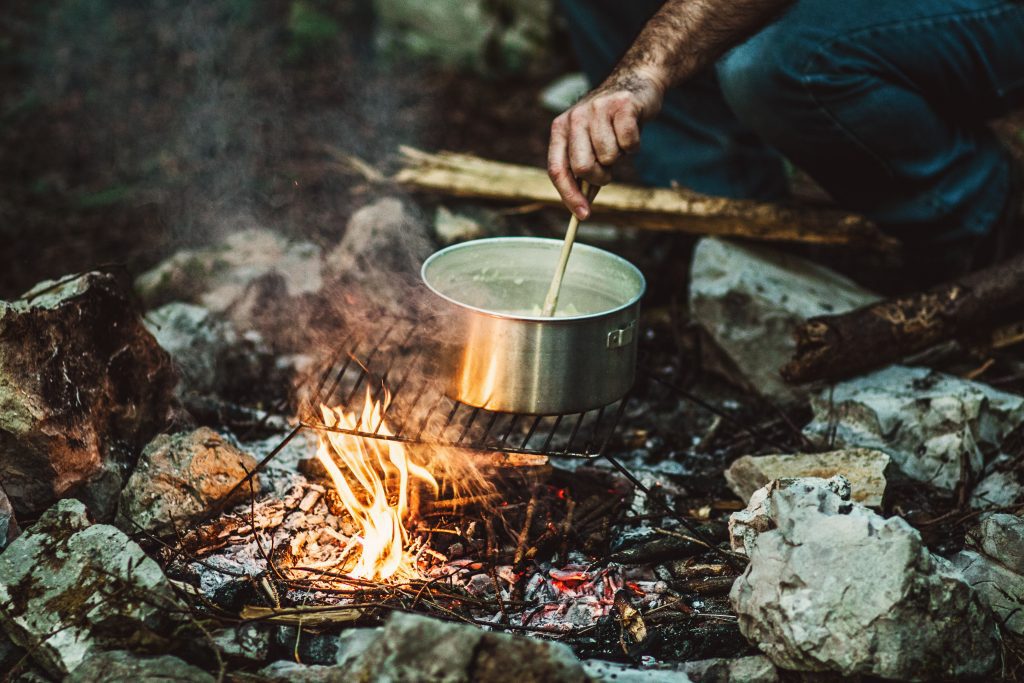
If you don’t have a gas or a charcoal grill, but you still want to cook outdoors, there are ways to explore your inner caveperson. All you really need is a shallow pit, some dry-ish wood logs, and a desire to explore campfire cooking.
Oh, and the fire, of course.
You could use a tripod assembly. They are inexpensive, portable, and easy to use. Consisting of three legs held together with a top bracket, this rig can be placed over any fire. The grill is attached to a chain. A locking mechanism on the chain allows adjustment of the grill height over the fire.
Flat grill assemblies with legs that can be used over small fires are also readily available. This type of grill is versatile and can support the weight of a cast-iron fry pan or small dutch oven.
Can you still enjoy campfire cooking if you don’t have any type of a grill assembly? Yes. The cavemen never had grills. Remember? They used sharpened sticks.
And no campfire cooking adventure would be complete without the S’mores. Don’t forget the marshmallows!
Rolling out the Aluminum Foil
One of the quickest and easiest ways to make a complete meal over a fire is by using aluminum foil. This versatile kitchen helper transforms into a campfire cooking powerhouse when you carry it into the wilderness.
A reminder to remove your trash and recyclables when you leave is not required, but we’re doing it anyway. Pack it in — pack it out. Please leave any wilderness area or campsite as pristine as when you first arrived. It’s the right thing to do.
Veggie packs
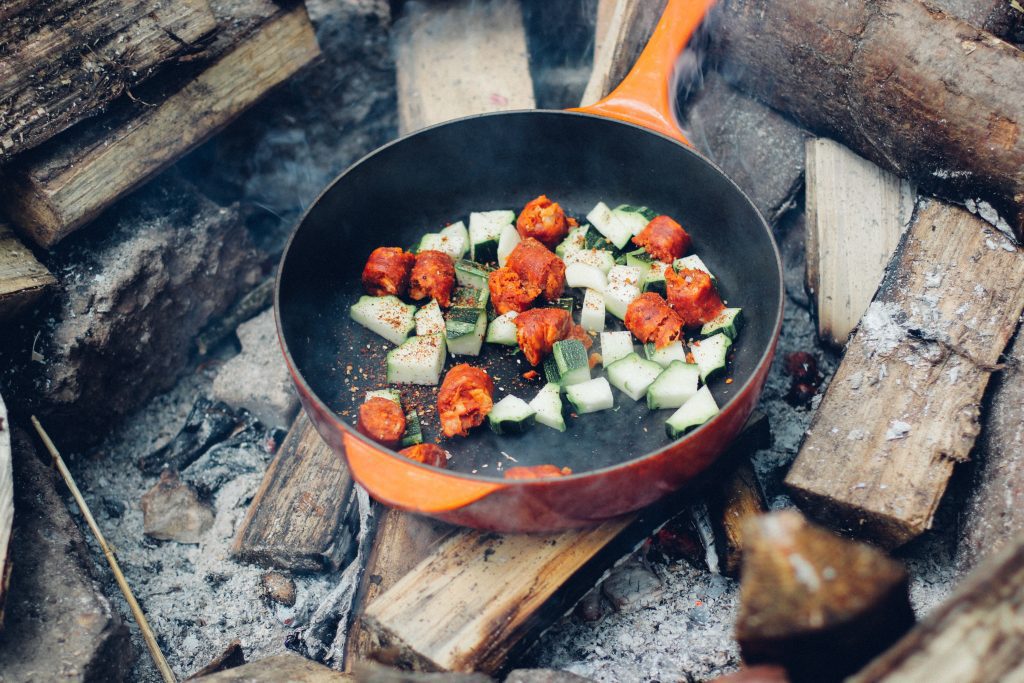
As we explore campfire cooking, your mom would kill us if we didn’t mention the veggies. People are moving toward a healthier diet, and that includes all the vegetables we hated as kids.
To make a veggie pack that can be cooked right on the coals is quick, easy, and produces a flavorful mix fit for a royal family. Or to satisfy picky kids. But how do you manage this veggie feast? You have to chop and prepare the veggies.
Optimal veggies for camping cooking:
- Broccoli
- Cauliflower
- Asparagus
- Green beans
- Corn (off the cob)
- Almost all peppers
- Potato chunks or wedges (or whole small potatoes, but pierce them)
Cut veggies to one-inch pieces and grab that aluminum foil. Lay two or three square sheets of foil out. Add a mix of your preferred vegetables, a tablespoon of butter (or an appropriate vegetarian substitute), and a dash of your favorite seasonings.
Fold up your packet, one layer of foil at a time. If you bought the thick foil, you will only need two layers. If you got the dollar store foil, use three. You’ll thank us later. Alternating the seams on your foil as you fold and seal the packets, completely close the foil around your veggies.
Set that aside for a minute, we have some other stuff to discuss before we sacrifice that to the fire gods.
Add a bit of meat to the mix
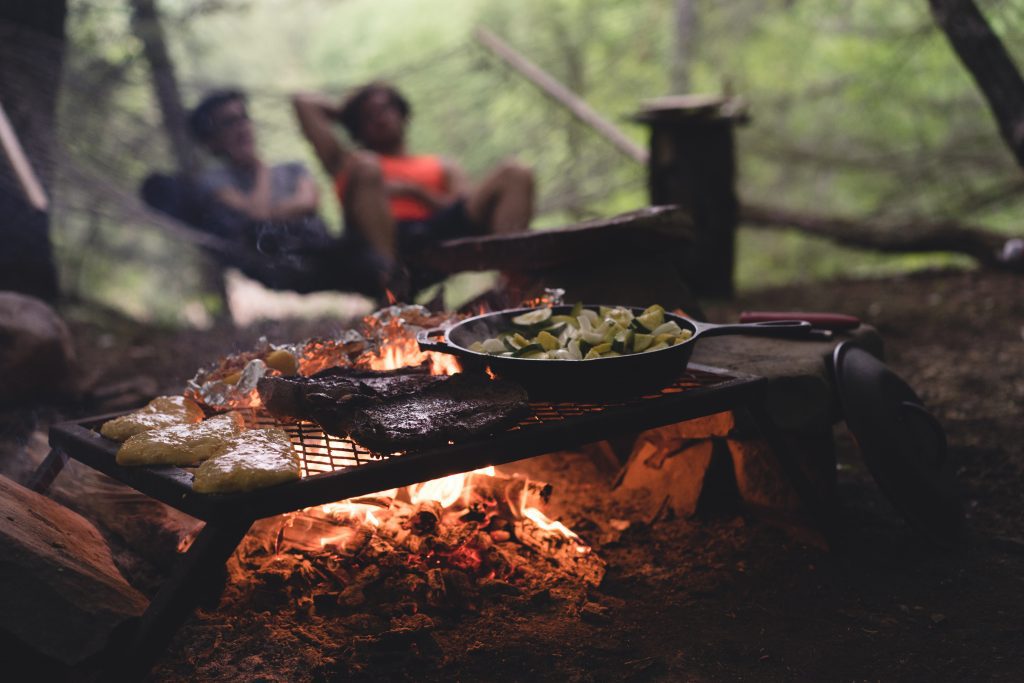
Unless you are a vegetarian, you probably want a bit of meat with your meal. While many people will insist that you need an actual grill to prepare a perfect steak, they would be wrong.
Whatever your cut of meat is, you can cook it in a foil packet if you don’t have a tripod or grill assembly to work with. You’ll have to practice a bit to get it perfect, so don’t be discouraged with your first attempt.
Meats have different cooking times and temperatures. Additionally, a thicker cut will take longer to heat through. While chicken and pork should be cooked thoroughly, you can eat beef as rare as your taste buds allow.
To speed up chicken and pork campfire cooking times, using a butterfly-cut will half the cooking time you need. As a general rule of thumb, both chicken and pork, a half-inch thick, will take approximately 8 to 10 minutes (or slightly less) per side to cook in a moderately hot bed of coals.
Adding a tablespoon of water (in addition to a tablespoon of butter) to your foil packet will help keep your cut of meat tender and juicy.
The water will turn to steam, which speeds up cooking time while locking in the flavorful natural juices of your cut of meat. Make sure to seal the foil packet completely to lock in that flavor, though.
Combo meals
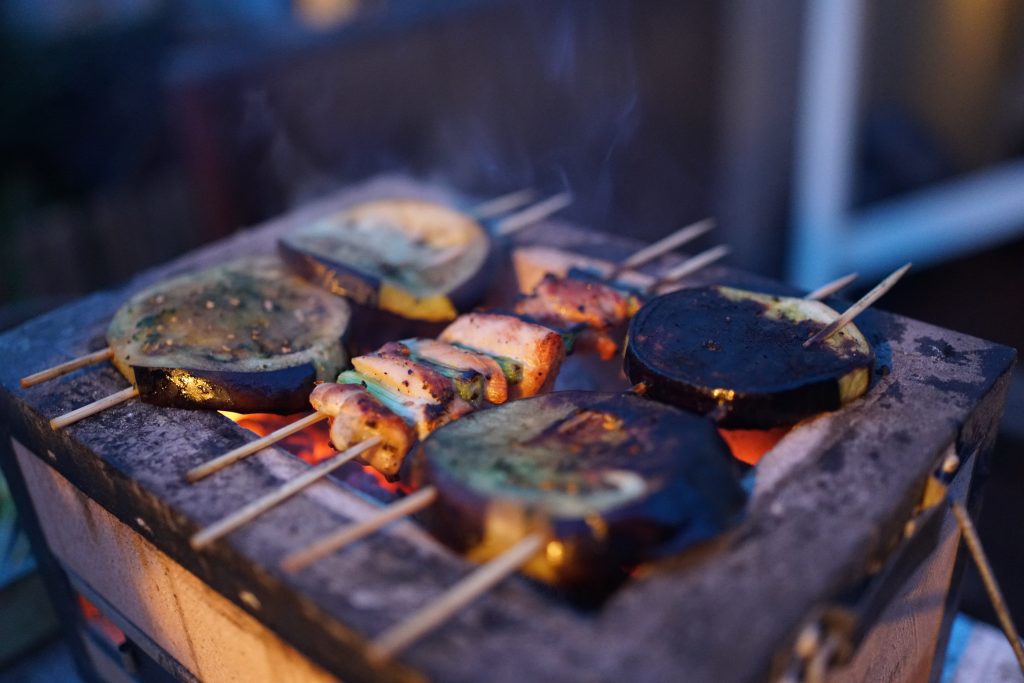
If you don’t want a lot of muss and fuss, you can pop your meat and vegetables into the same foil packet. When adding meat to the mix in this manner, it works better if you pre-cut it into smaller chunks approximately one-inch in size.
Foil packets can be placed directly onto the coals of an established fire, or on the tripod or grill if you have those.
Gimme That Trusty Ole Skillet
If you just can’t deal with aluminum foil, a trusty cast-iron skillet is a campfire cooking powerhouse. Please remember to use a fire- and heat-resistant glove to move the pan around though.
It will get extremely hot whether you use it on a grill frame or directly on the coals.
Yes, right on the coals
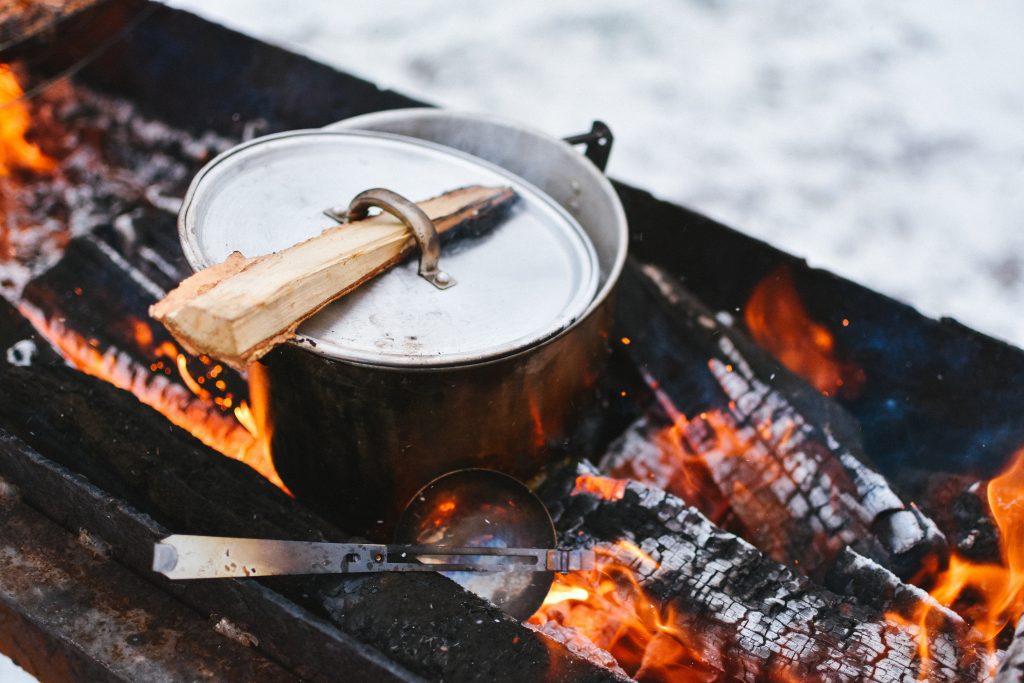
Wait. Did we just say to use a cast-iron skillet right on the coals?
Yes. Yes, we did. Cast-iron is one of the oldest and most fire-stable cooking utensils on the market. So if you don’t currently have one consider adding that to your gotta-have campfire cooking tool list.
Cast iron can be used to bake, fry, and simmer all your meals (but don’t use it to marinade). After eating, it can be used to boil a splash of water for the cleanup. A properly seasoned cast-iron skillet is worth its weight.
Toss it all in there
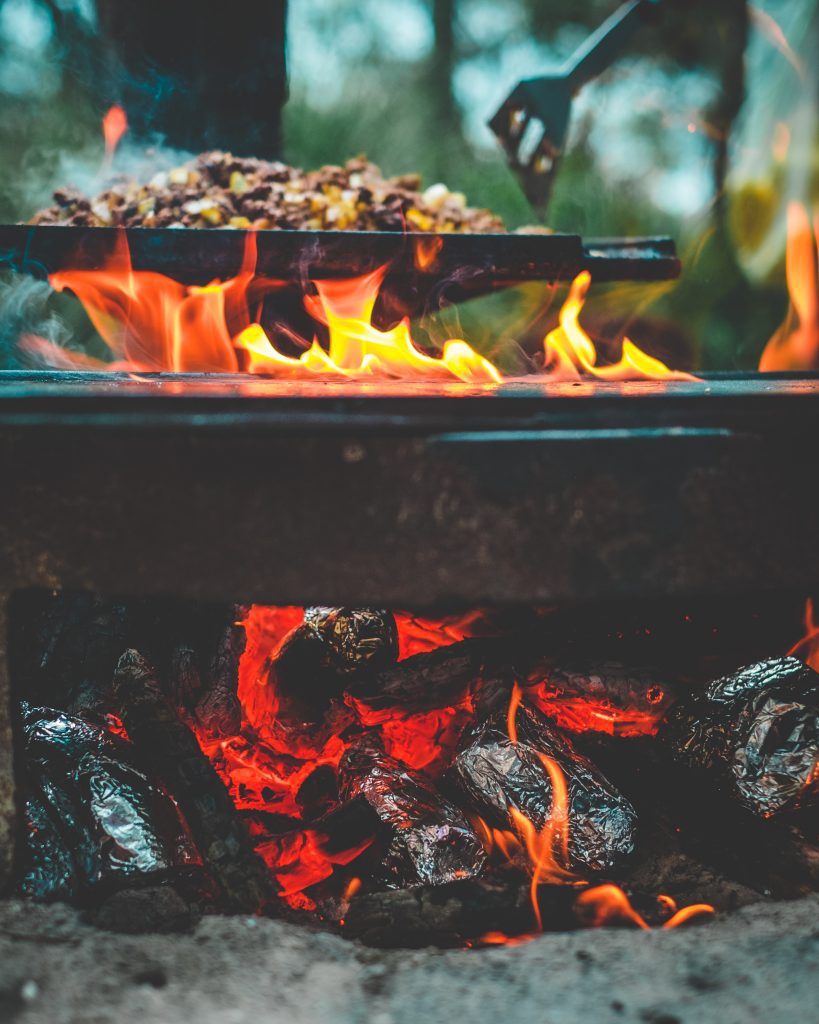
Vegetables, meats, and even cornbread can be prepared in a cast-iron skillet. Whatever you brought to eat, just toss it in with a spot of oil or butter, and toss the skillet right on top of the bed of coals.
If you have delicate items in your skillet that don’t need such a high heat, you can use stout sticks pushed into the ground around your coals to build a temporary stand to rest your skillet on.
Use sticks that are green (from a live tree), at least a half-inch thick (as round as your thumb), and approximately the same length. Make sure that the sticks are pushed far enough into the ground and are stable enough to support the weight of your skillet.
You can build your stand outside your firepit and shovel coals to the center when it is time to cook.
Did Somebody Say Steak?
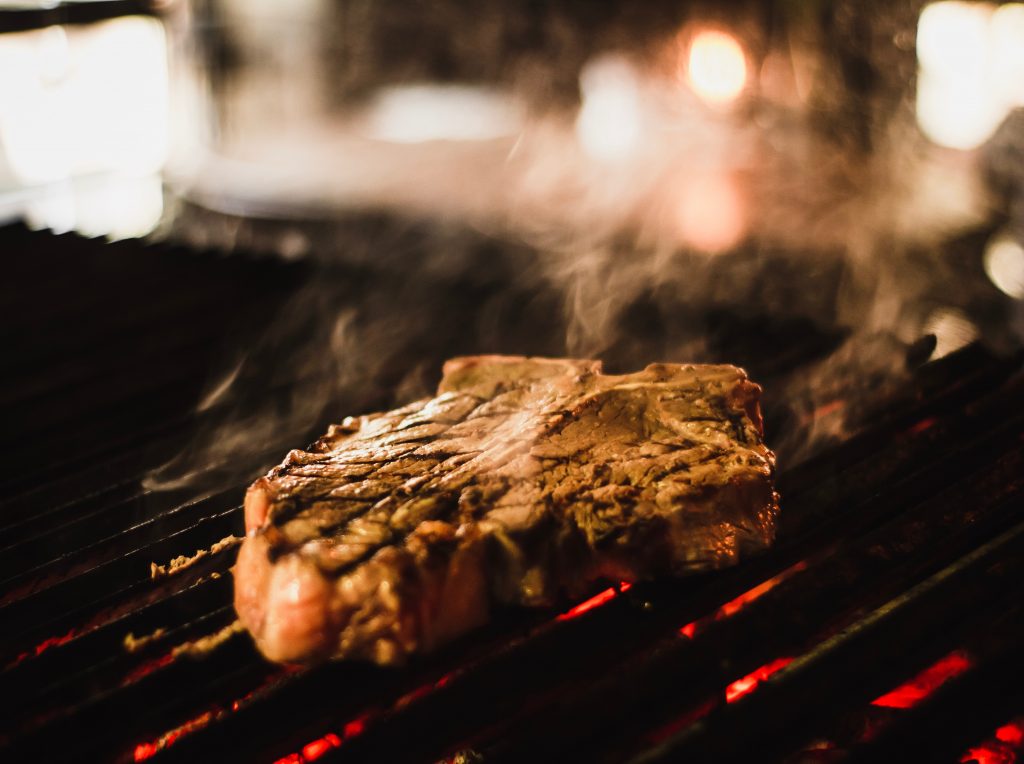
Steak is the quintessential meal for campfire cooking.
If you are planning on cooking steaks over an open fire, you will need to practice. Adjusting the grill of a tripod up or down to increase or reduce heat is a science we don’t have time for here.
Burgers, Dogs, and Don’t Forget the Jiffy Pop
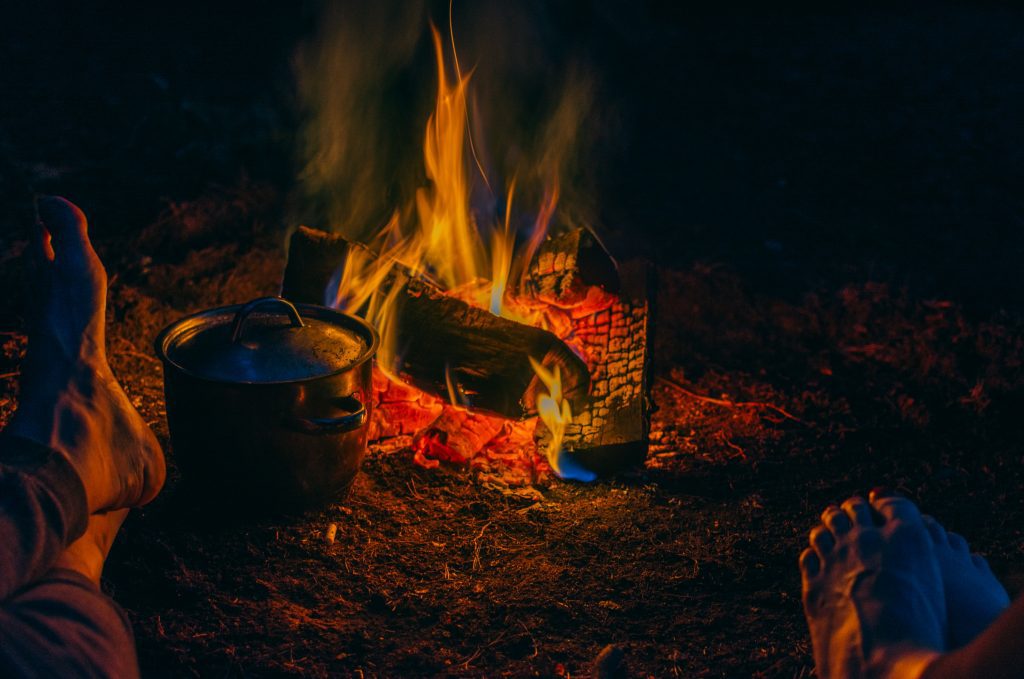
Limiting your campfire cooking to burgers and dogs will leave your family wanting more. There are really no limits to what can be prepared over an open fire. If you can cook it in your kitchen, you can cook it over (or in) a campfire.
If you had a childhood fancy for JiffyPop popcorn and miss the nostalgic taste of burnt popcorn and a tired arm — they still make it.
We hope you enjoyed our foray into the art of campfire cooking and that your appetite is ready to explore this venue. Let us know in the comments if you have some great campfire recipes to share.

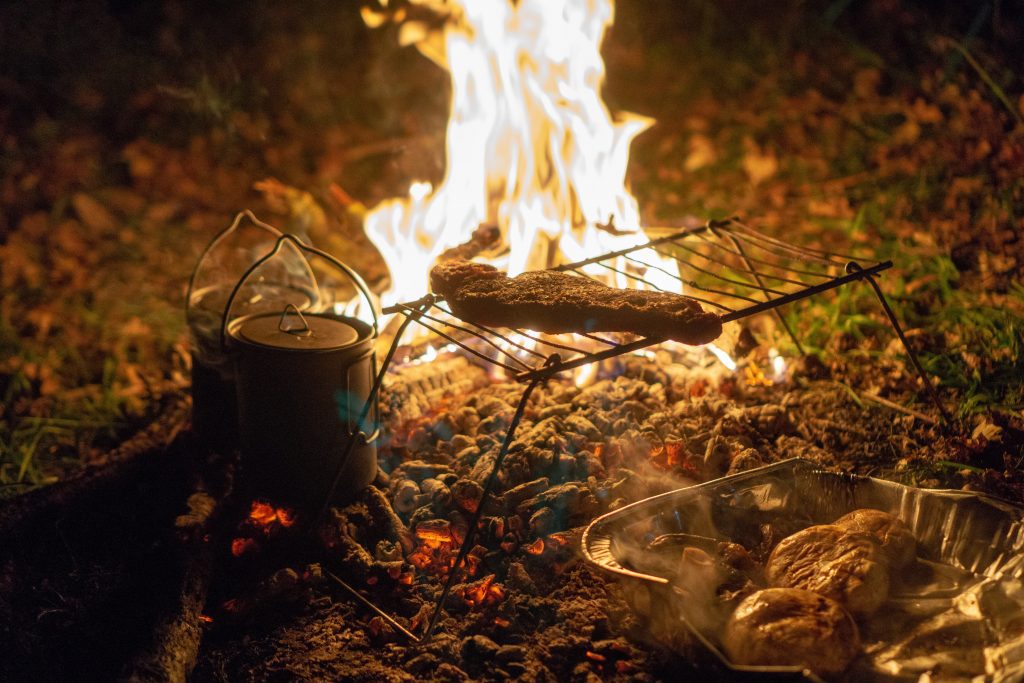
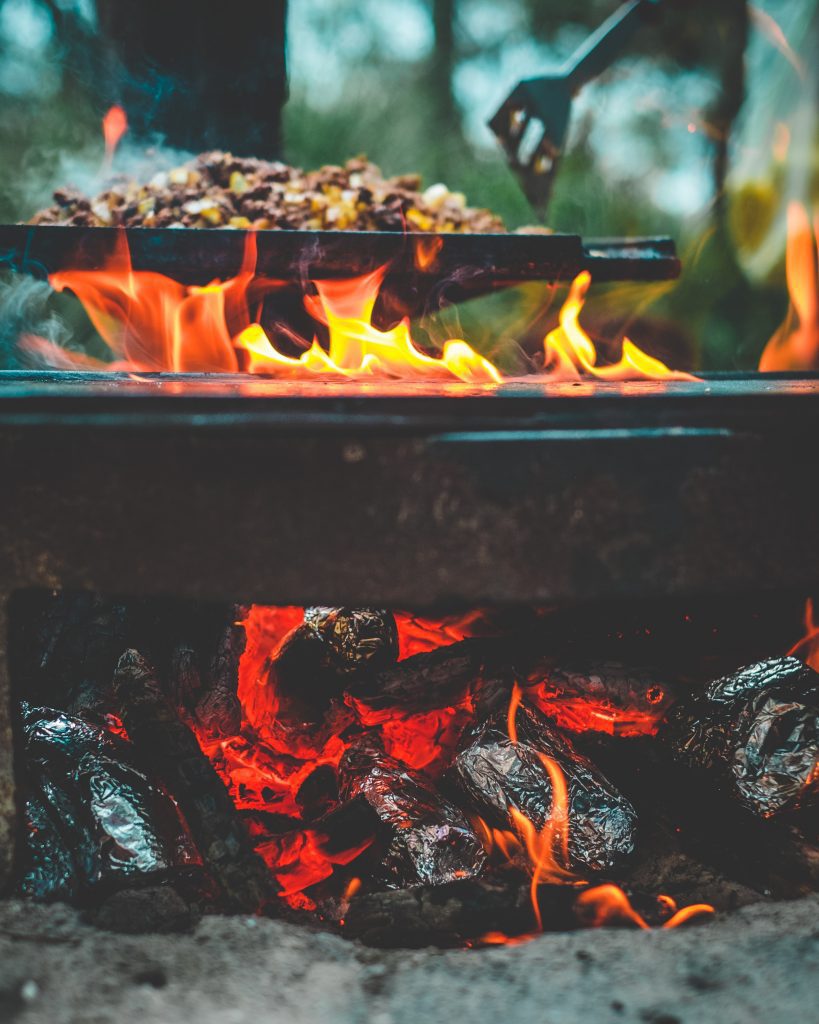


7 Comments
I might have to go camping just to try these out! Ha, thanks!
You have some very good cooking ideas and tips for us boondockers I have always enjoyed the aluminum foil packets which we called hobo dinners when we were in scouts and we still do them today 60 years latter.
Nothing like camping and cooking some food. Hot dogs and burgers are great, but theres so much more than can be done with a little bit more effort!
I will try these cooking ideas for sure when I will go for a camping. In past I was just preferring with packed food. But now I am thinking to cook something for myself.
After reading this I am thinking to go for camping. Thank you for sharing this one. I will surely try these next time.
When we go camping, we always bring some steak to cook! Just because it’s simple, doesn’t mean we have to go simple in food! Thanks for sharing!
Definitely something we needed in our after quarantine vacation 😉